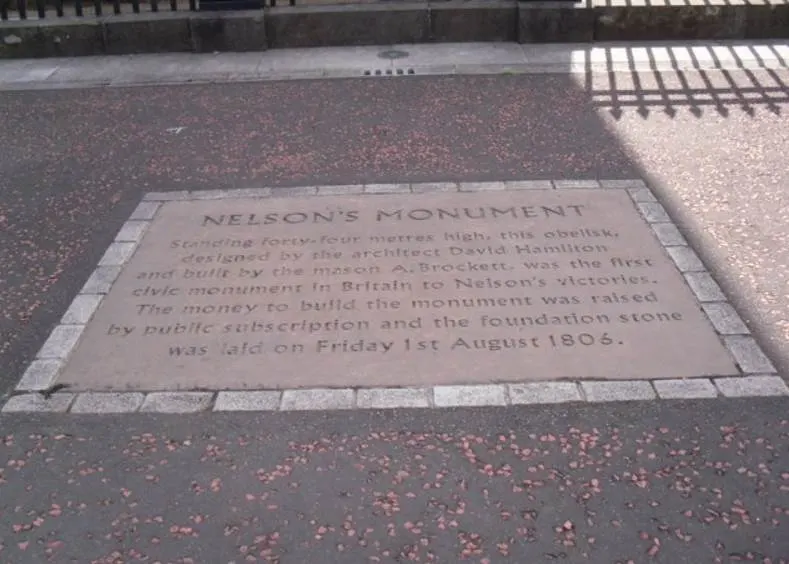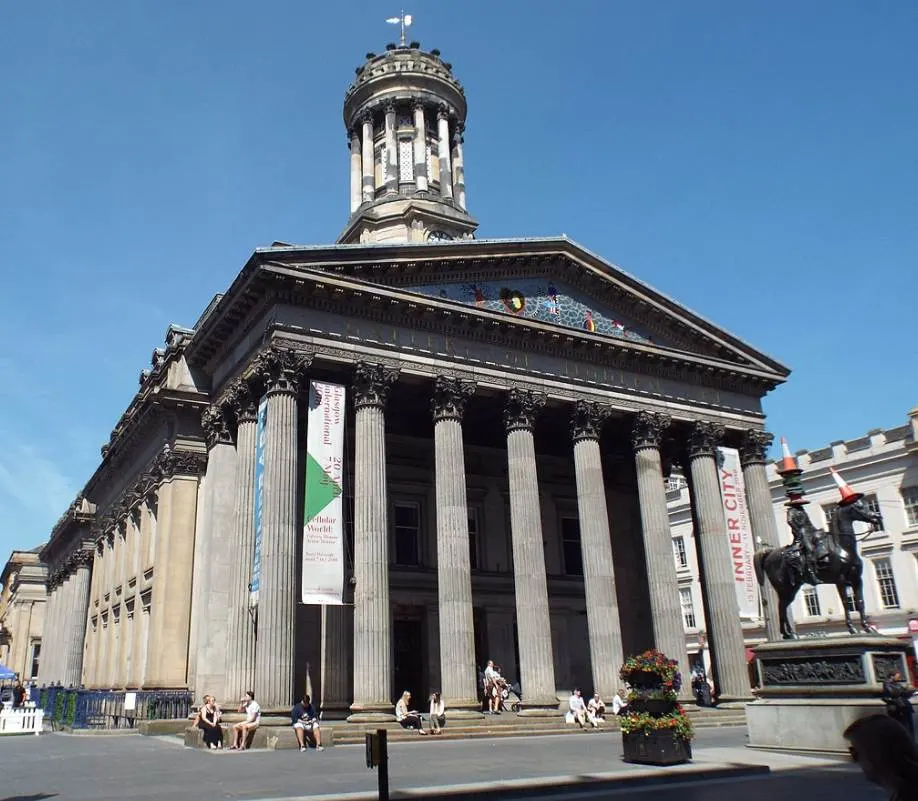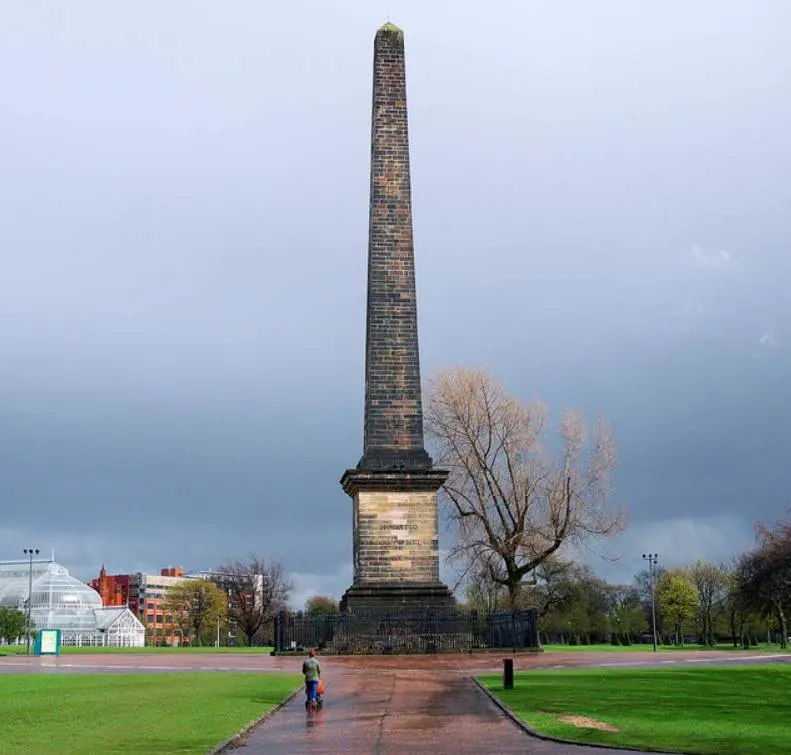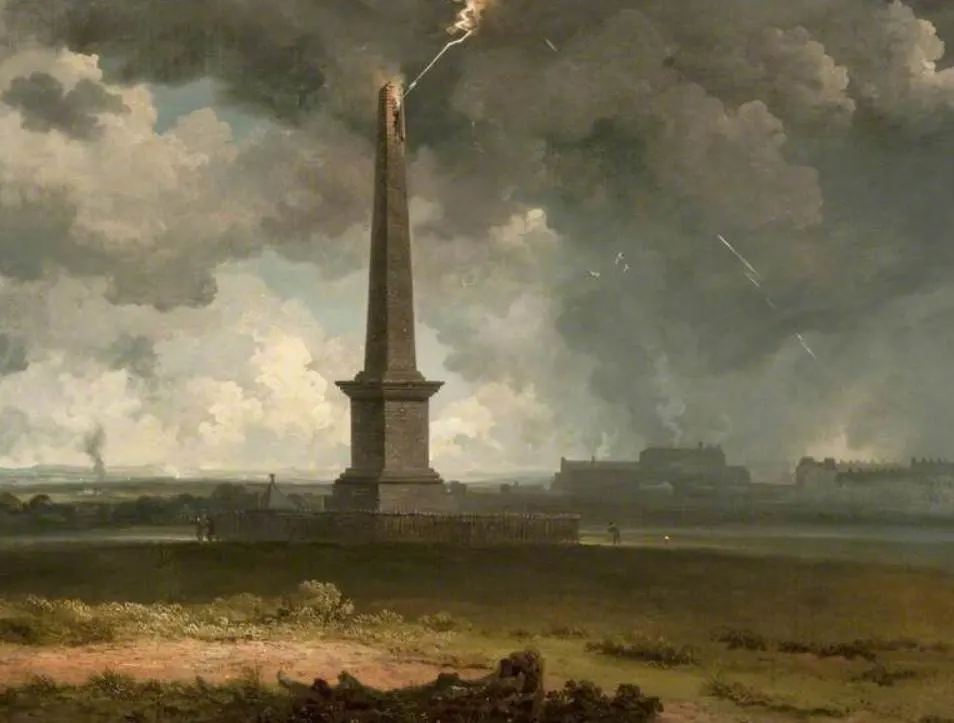Even though numerous monuments and memorials have been built in honor of Horatio Nelson, 1st Viscount Nelson (1758-1805), only one of them could be the first to be erected.
This wasn’t the famous Nelson’s Column at Trafalgar Square in London or the Nelson Monument on Calton Hill in Edinburgh, but one built in the most populous city in Scotland.
Let’s take a closer look at some of the most interesting facts about the Nelson Monument in Glasgow, one of the most intriguing monuments built in honor of the fallen Admiral.
1. It’s located in a famous park in the eastern part of Glasgow
The Nelson Monument is one of the most prominent landmarks in the city of Glasgow, the largest city in Scotland and the 4th-most populous city in the United Kingdom.
It stands majestically in an isolated location in Glasgow Green, a large public park and the oldest park in the city. It was established in the 15th century and is located just east of the historical heart of the city.
The park is located on the northern bank of the River Clyde and is just walking distance away from the oldest building in the city, Glasgow Cathedral. This is the burial place of the patron saint of the city, Saint Mungo.
It’s a pretty big park as well as it covers an area of 55 hectares (136 acres), making it one of the most enjoyable places to relax in the heart of the city.

2. It was built for the same reason as all other monuments in Nelson’s honor
The monument was built in honor of Vice-Admiral Horatio Nelson, a man who lost his life during the Battle of Trafalgar off Cape Trafalgar in the southwest of Spain.
This battle took place on October 21, 1805, and was fought between the British Royal Navy and the combined Spanish and French fleet during the Napoleonic Wars. Even though the British won the battle, Nelson ended up being killed that same day.
The heroic efforts of an outnumbered Nelson (27 British ships against 33 French and Spanish ships) sparked the admiration for the man resulting in numerous monuments and memorials being built in his honor all around the world.

3. It was erected just a year after the death of Horatio Nelson
One of the most remarkable facts about the Nelson Monument is that it was the first structure in his honor to be erected. The foundation stone was laid on August 1, 1806, less than a year after the battle.
The monument in Edinburgh was erected between 1807 and 1816 and the famous Nelson’s Column in London wouldn’t be completed until the 1840s.
This monument in Glasgow was followed by a wide range of monuments and memorials in his honor. These were built as far as Montreal, Canada, and even Bridgetown, Barbados.

4. It has the design of a famous ancient Egyptian structure
The design of the monument resembles one of the most famous types of structures in history, the obelisk. This is a type of structure that was extremely popular in ancient Egypt and Rome and that had a revival during the Neoclassical period of the 18th and 19th centuries.
During this period, new obelisks weren’t just erected but many were brought to various big cities in Europe. Cleopatra’s Needle in London and the Luxor Obelisk at the Place de la Concorde in Paris are just a few examples.
The most famous obelisk in the United States was erected in the 19th century as well. The Washington Monument was completed in 1854 and is located in the center of the National Mall in Washington D.C.
5. Its architect also designed a famous building in Glasgow
The obelisk was designed by a local architect named David Hamilton (1768-1843). It stands on a square plinth and is surrounded by cast-iron railings.
Hamilton can easily be described as one of the most renowned Glasgow architects in history and is sometimes referred to as “the father of the profession” in the city. That’s quite an honor, don’t you think?
Apart from designing the Nelson Monument in Glasgow, he also designed various other structures in the city. Perhaps the most famous one is the façade of the previous stock exchange in Glasgow which now houses the Gallery of Modern Art.

5. It’s much taller than it initially appears to be
Even though it doesn’t appear to be as tall when you approach the monument, it still stands 44 meters (144 feet). That’s mainly because of its isolated position at Glasgow Green.
Even though this is pretty, tall, it’s nothing compared to the Washington Monument which stands 169 meters (554 feet) tall. This was also the tallest structure in the world upon completion in the 19th century.

6. The monument suffered a lightning strike shortly after it was completed
One of the most fascinating facts about the Nelson Monument in Glasgow is that it was struck by lightning shortly after it was completed. This event left a structural crack in the monument.
Equally remarkable is that this event was painted by Scottish landscape painter John Knox (1778-1845). This painting can now be admired at the People’s Palace Museum which is located right across the monument and also at Glasgow Green.

7. Admiral Nelson isn’t the only man commemorated at the monument
A commemorative plaque can be found near the obelisk which mentions that the monument was erected in honor of Admiral Horatio Nelson and that the foundation stone was laid on Friday, August 1, 1806.
This plaque was joined by a tablet that was added to the monument in 1965. This tablet commemorates the efforts of James Watt, who got very inspired to build an improved steam engine while spending time relaxing at Glasgow Green in the 1760s and 1770s.
This “Watt Steam Engine” would pretty much change the course of history as it was a defining machine at the start of the Industrial Revolution. So yes, he deserves to be mentioned here as well.
8. It has been a Category A listed structure since 1970
The monument became a category A listed structure as defined by Historic Scotland on December 15, 1970. This makes it one of the about 3,800 Category A listed buildings in Scotland.
Other famous buildings and structures that have received this honor are the National Gallery of Scotland in Edinburgh and the Forth Bridge, to name just a few of the most famous ones.



